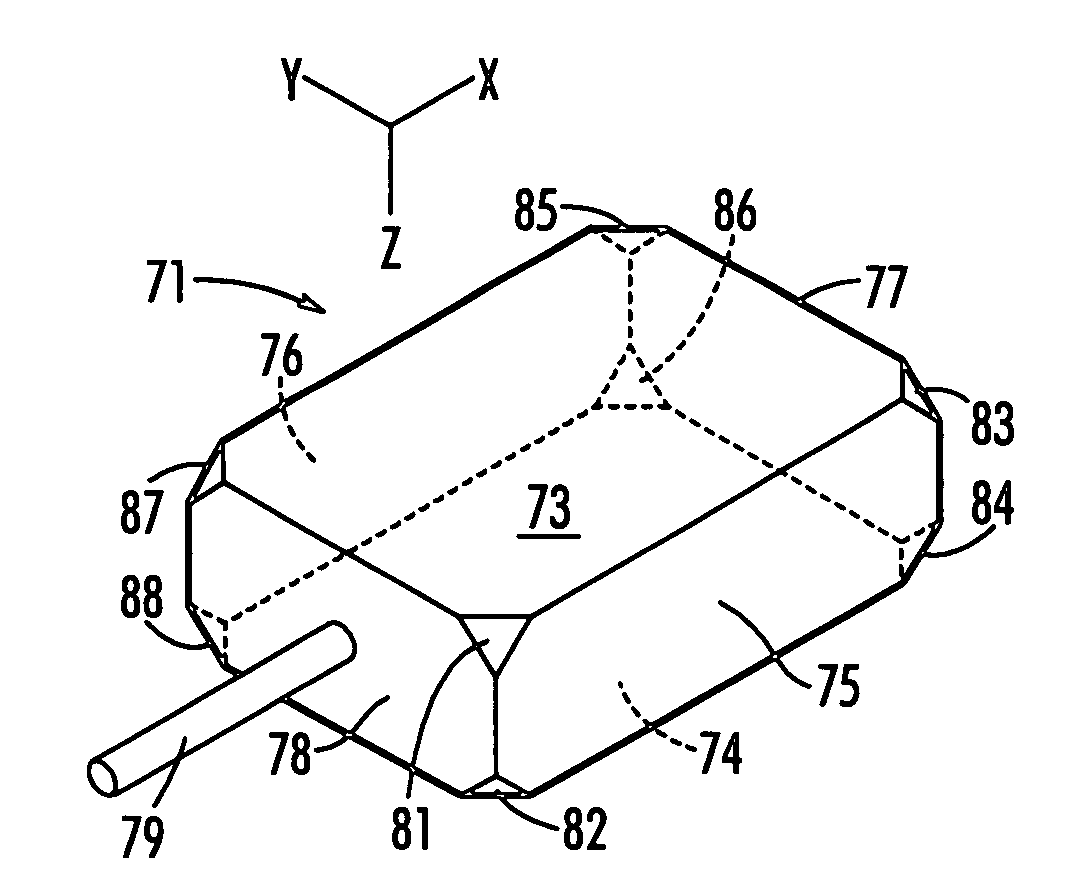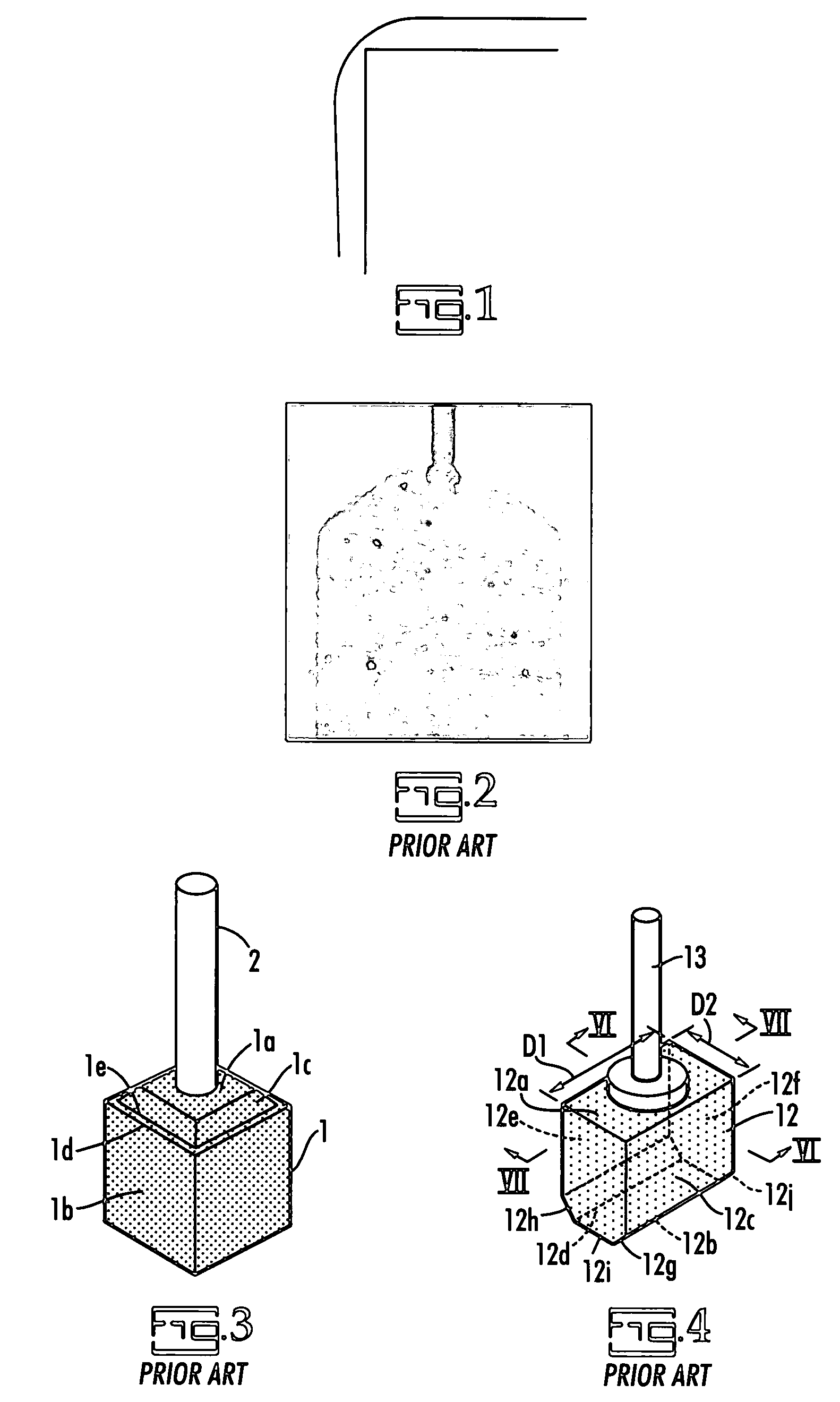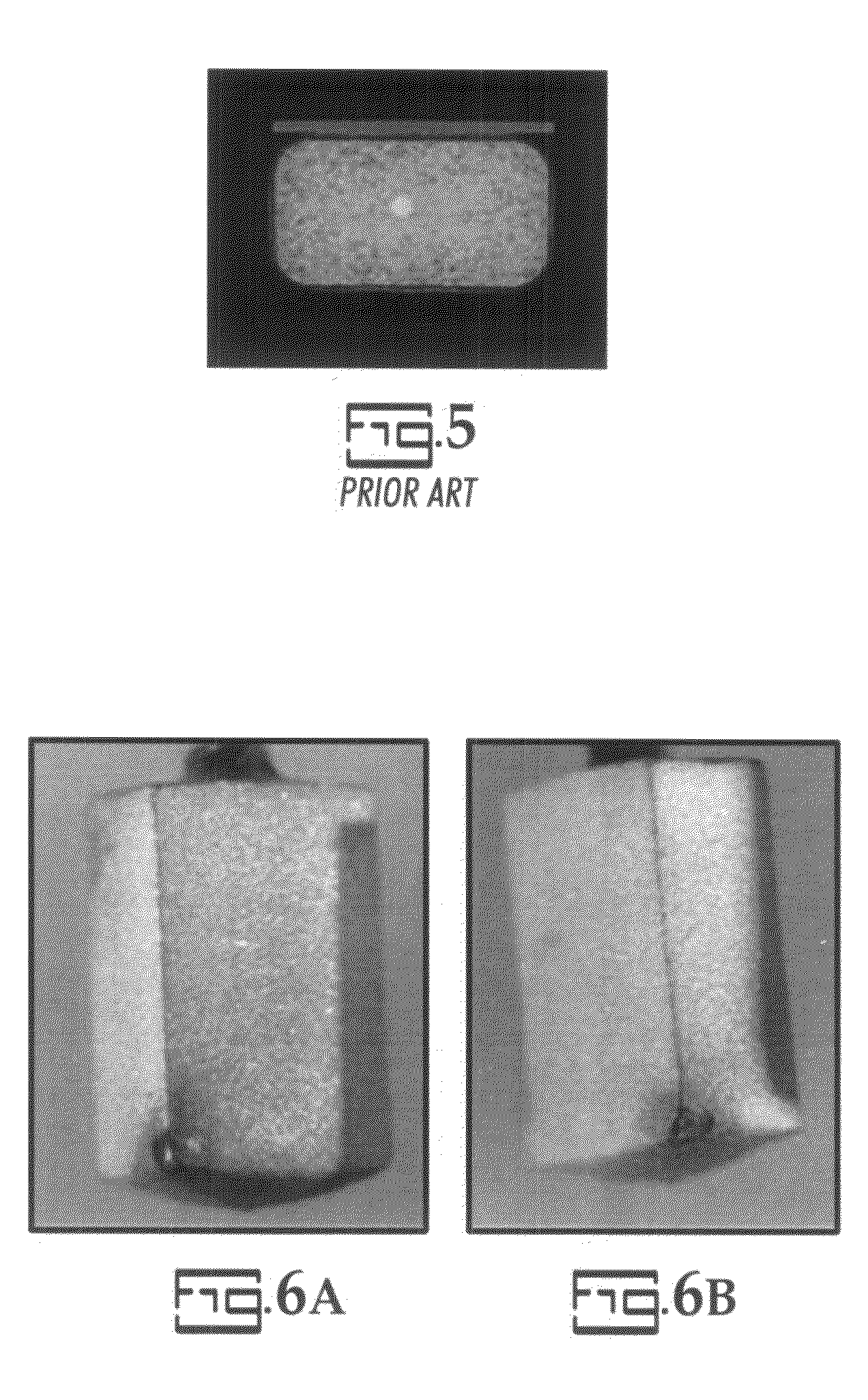Anodes with corner and edge modified designs
a technology of anodes and designs, applied in the field of optimizing geometries for anodes, can solve the problems of increasing the temperature at the defect site, not yet being implemented on a production scale, and difficulty in coating edges and corners of anodes with slurry, so as to reduce the thermo-mechanical stress on edges, reduce the reliability of the device, and reduce the effect of stress distribution
- Summary
- Abstract
- Description
- Claims
- Application Information
AI Technical Summary
Benefits of technology
Problems solved by technology
Method used
Image
Examples
example 1
[0079]Commercial electronic grade 22,000 CV / g tantalum powder was pressed to form anodes to a density of 5.5 g / cc with dimensions 4.70×3.25×1.68 mm using a radial action press. The punches of the press were modified to create a notch or v-cut in each corner of the anode as depicted in FIG. 15. This modification to the corners is referred to as corner cut anode designs. The sintered anodes were anodized at 100 volts in an aqueous phosphoric acid electrolyte maintained at 80° C. The parts were subsequently dipped in liquid suspensions containing pre-polymerized polyethelyenedioxthiophene (PEDT). Photomicrographs were taken to determine the degree of polymer coverage on the corners of the anodes (FIG. 16). After application of a conductive polymer slurry the parts were dipped in a carbon suspension used for commercial tantalum conductive polymer capacitors. The anodes were dipped in an electronics grade silver paint prior to assembly and encapsulation to form surface mount tantalum cap...
example 2
[0081]Commercial electronic grade 13,000 CV / g tantalum powder was pressed to a density of 5.5 g / cc with dimensions 4.57×3.10×1.63 mm using a pill style press. The lead wire is attached after pressing with this type of press. The action of this style press generates anodes with rounded corners on one side of the anode. The corners on the opposite side of the anode are sharp, well defined corners. The sintered anodes were anodized to 130 volts in an aqueous phosphoric acid electrolyte maintained at 80° C. The parts were subsequently dipped in liquid suspensions containing pre-polymerized polyethelyenedioxthiophene (PEDT). Photomicrographs were taken to determine the degree of polymer coverage on the rounded corners of the anodes (FIG. 18). Photomicrographs taken of the opposite side of the anode demonstrates the poor polymer coverage on the sharp well defined corners of the anode (FIG. 19). These pictures clearly indicate the need to modify the corners of the anodes in order to obtain...
PUM
| Property | Measurement | Unit |
|---|---|---|
| radius | aaaaa | aaaaa |
| thickness | aaaaa | aaaaa |
| thickness | aaaaa | aaaaa |
Abstract
Description
Claims
Application Information
 Login to View More
Login to View More - R&D
- Intellectual Property
- Life Sciences
- Materials
- Tech Scout
- Unparalleled Data Quality
- Higher Quality Content
- 60% Fewer Hallucinations
Browse by: Latest US Patents, China's latest patents, Technical Efficacy Thesaurus, Application Domain, Technology Topic, Popular Technical Reports.
© 2025 PatSnap. All rights reserved.Legal|Privacy policy|Modern Slavery Act Transparency Statement|Sitemap|About US| Contact US: help@patsnap.com



